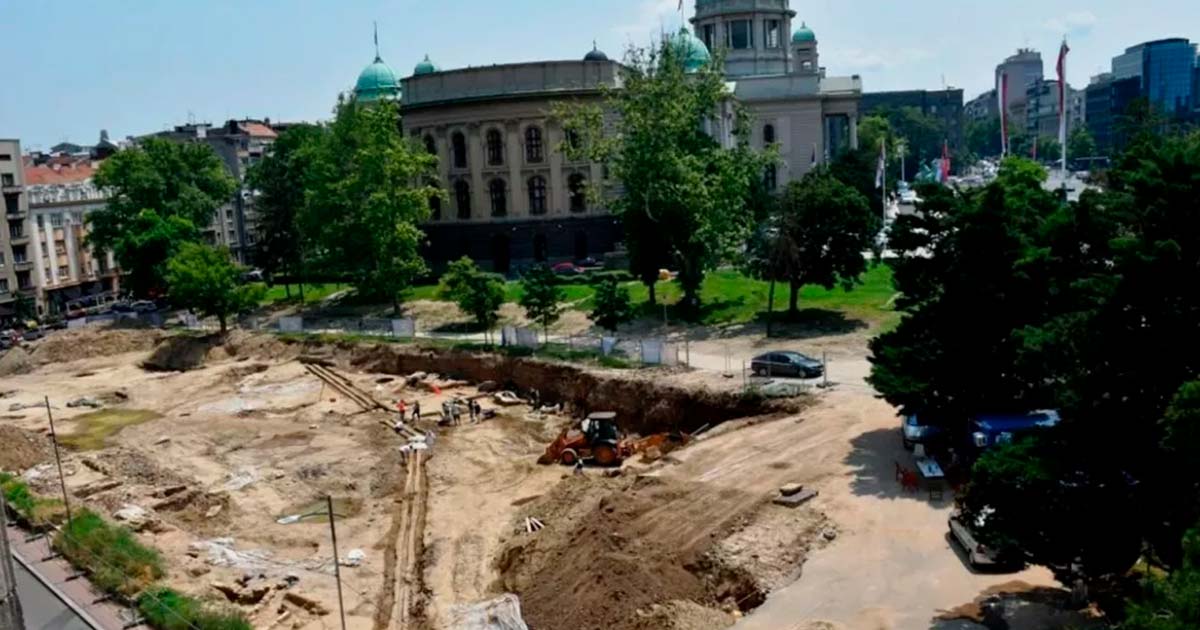Roman Necropolis Both Found and Doomed Due To A Car Park in Belgrade
Archaeologists in Serbia, excavating in the center of the city of Belgrade, have discovered a Roman necropolis filled with elaborate stone tombs, and a section of a Roman aqueduct system. However, the discoverers nervously await a decision that might see the entire site destroyed to make way for a new parking garage.
Back in March this year, archaeologist Milorad Ignjatović, curator of the Belgrade Museum, told The Portal that 1940s research in Belgrade, the capital city of Serbia, identified several different types of burials. The 80-year-old archaeological reports detailed “cremated deceased in simple tombs to complex tombs built of brick and stone, as well as numerous funeral stelae and altars and stone plastic."
For the last three months archaeologists have been excavating a site next to the House of the National Assembly, in Vlajkovićeva street, in Belgrade. Now, at the end of their 2023 excavation season, the Belgrade Museum have announced their discovery of the lost Roman necropolis of Singidunum (Roman name for Belgrade), and they described the stone tombs as “phenomenal.”
- Serbian Roman Artifact Vanished 24 Hours After Discovery
- What Destroyed the Floating Palaces of Emperor Caligula?
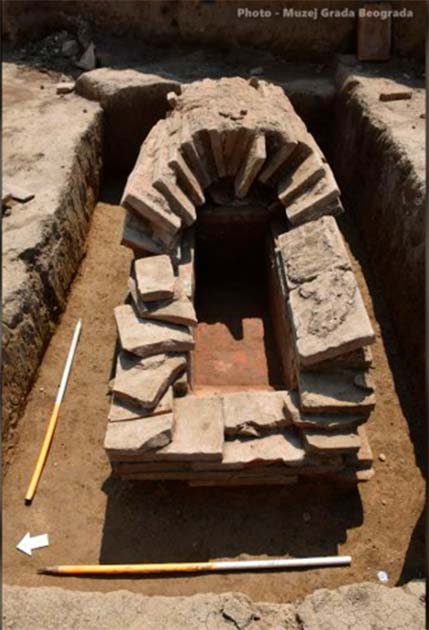
Roman brick tomb found in Belgrade. (Belgrade City Museum/sveoarheologiji)
Rediscovering The Lost Roman City of Singidunum
Singidunum was founded at the confluence of the Sava and Danube rivers, and at the crossroads of the Pannonian Plain and the Balkan Peninsula. Being so strategically located, the Romans founded Singidunum as a military stronghold. However, it soon expanded into a prosperous urban center, which is evident in remains such as the water well at the Kalemegdan Roman fortress, and the castrum, a smaller fort that also defended Singidunum’s city walls during Roman rule.
- The Roman Legions: The Organized Military Force Of The Roman Empire
- Remote Sensing Technology Uncovers 66 “Hidden” Roman Bases In Spain
Searching for the lost Roman necropolis that was described in the 1940s, the archaeologists excavated beneath the foundations of buildings that were destroyed in the Allied bombing of 1944, during WW2. Yesterday, Ignjatović said that so far, the archaeologists have excavated “14 phenomenal Roman tombs dating between the 3rd and 4th centuries AD”.
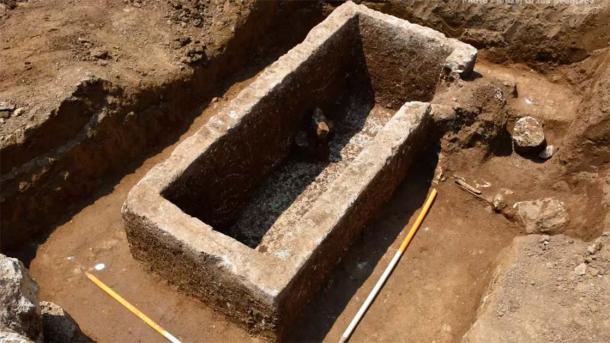
One of the stone sarcophagi. (Belgrade City Museum/sveoarheologiji)
Tomb Designs Signify Social Status
Two of the tombs feature “rectangular bases with arched vaults, walled with bricks,” while another two were made “of bricks stacked in the form of coffins.” The researchers also discovered four stone sarcophagi, which Ignjatović described as “the most luxurious way of burial in Roman times." Ignjatović explained that the designs of the stone tombs greatly depended on the social status of the person buried within, and that the most elaborate tombs belonged to the wealthiest patrons.
One of the tombs was constructed with large stone slabs taken from older Roman tombstones, and these steles were inscribed with votive Latin inscriptions. One inscribed stone fragment came from the tomb of an unknown Roman soldier, whose wife or daughter Claudius had commissioned his tomb. This inscription says the soldier was a very religious man who served in the Roman army for 30 years, before dying at the age of 46-years-old.
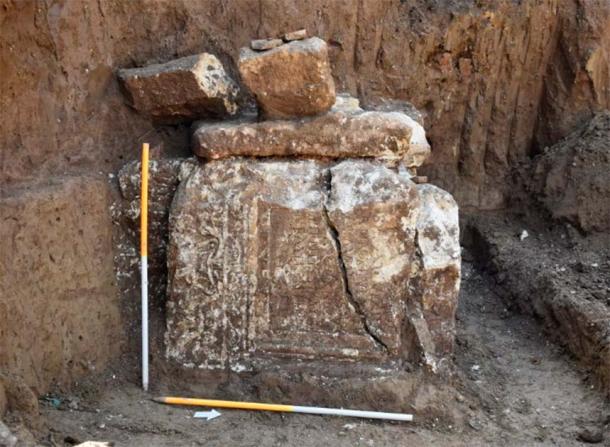
Gravestone with an inscription in Latin. (Belgrade City Museum/sveoarheologiji)
Each of the 14 tombs so far excavated had been plundered by looters. This is why the archaeologists only recovered a handful of coins and pieces of jewelry, including a gold necklace inlaid with an emerald-green semi-precious stone, and a fine glass hair pin. Ignjatović said these prize artifacts are now on display at the Collection of Antiquities of the Museum of the City of Belgrade .
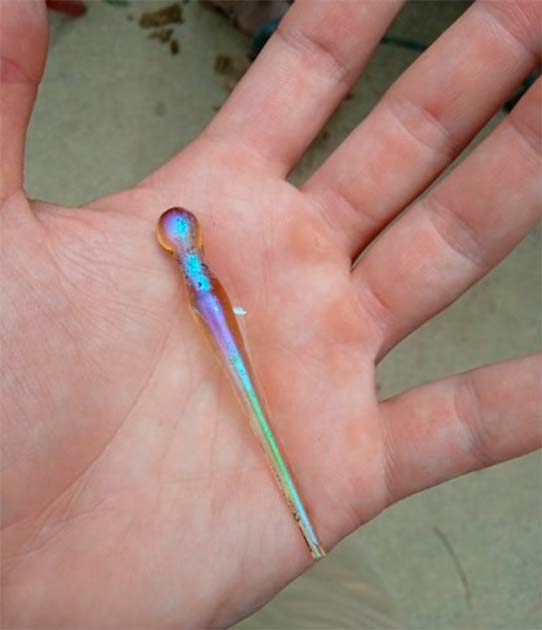
A rare glass hairpin was found amongst few other finds. (Belgrade City Museum/sveoarheologiji)
Rediscovering Ancient Water Channels
The researchers also identified over 70 meters (229.66 ft) of the secondary Roman water supply system for the city of Singidunum. The water source of the main aqueduct system was located near today's Mokroluški stream, and this secondary system is thought to have been supplied with water from a source next to a stone mine at the foot of today's Tašmajdan park in central Belgrade.
This secondary water system filled all of the local fountains and the wells of private villas between the 2nd and 3rd centuries AD. Furthermore, evidence was found to suggest water was channeled from the fountains through smaller stone aqueducts to public baths, and also to grain mills.
The Long Hard Wait For Fate
Archaeologist Ignjatović is fighting for the site to become a new archaeological park, which he said “would be the first of its kind in Belgrade.” However, Belgrade city officials are determined to build an underground car park over the Roman burial site, which Ignjatović said would “completely destroy the Roman site.”
Ignjatović explained that the plans of a new parking garage were no problem “before” his team discovered the rare Roman tombs and remains of the ancient water supply system. Now, staff at the Belgrade Museum are waiting for city planning officials to decide if the tombs and ancient water supply “will be buried, raised or left for citizens to see what they are walking on?” according to Ignjatović. The archaeologist said his team is braced to hear the city’s decision, which will decide on the fate of the ancient Roman necropolis.
Top image: The site where the Roman necropolis and aqueduct have been discovered in Belgrade, Serbia. Source: Belgrade City Museum/sveoarheologiji
By Ashley Cowie
















